Every spring, I usually “start” the paddling season with a long solo paddle. I write “start” because typically, paddling is a year-round activity for me; I may slow down in the colder months but I still go out, and lately I’ve run a pool program in the winter as well.
However, these past few months have not been anything approaching typical.
For one, the global pandemic of COVID-19 has forced constraints on everday activities like buying groceries,visiting friends, or going for a drive. I live in New York City, in Manhattan specifically, and while I am privileged to 1) still have a job and 2) work at home even in normal times, the city has been home to the largest outbreak in the U.S. to date, and for much of April and May we were all required to stay inside, while literally hundreds of people a day were dying.
For another, even as the COVID-19 caseloads have dropped dramatically, and New York City has begun “re-opening”, the killing of George Floyd in Minneapolis has sparked massive demonstrations in cities all across the country, including New York. Thousands of people have marched in multiple protests across the city, prompting the first curfew imposed since World War II.
The backdrop of these two events is inescapable, and impossible to avoid thinking about when planning any activity. As it happens, one of the long-duration trips I had in mind would literally help connect the dots between pandemics and criminal justice, in the distance past as well as in the present.
The beginning of June marks the birthday of a friend of mine who passed away a couple of years ago, succumbing to cancer. He and his wife, whom I’m also friends with, have been great inspirations to me in my local paddling, regularly going on epic long trips, with great writeups and amazing photos. They took me on my first (and thus far only) paddle from Manhattan to Sandy Hook, NJ; Johna’s also been a part of some more recent trips I’ve put together since Vlad’s passing.
One writeup is a long-term goal of mine. As I call it, it’s a Manhattan circumnavigation with a side order of Long Island Sound. It’s something to work up to, and to be honest, having made the Long Island Sound part of the journey now, I’m a little skeptical of my ability to develop the endurance and steady pace that would be required.
For this trip, I took my basic plan for a trip to the Throgs Neck Bridge and sorted out the additional timing to head out around Hart Island, from Inwood, Manhattan. I expected a challenge, but the trip proved more challenging than I expected. I would pass North Brother Island, Rikers Island, and eventually, Hart Island.
These are new photos, taken on this trip. I’ve paddled near each of these islands, and at different points described each one of them as “the saddest island” or “island with the saddest history” in New York City. I honestly don’t know that it’s a competition any place, let alone these islands, could win; each one is sad in its own way.
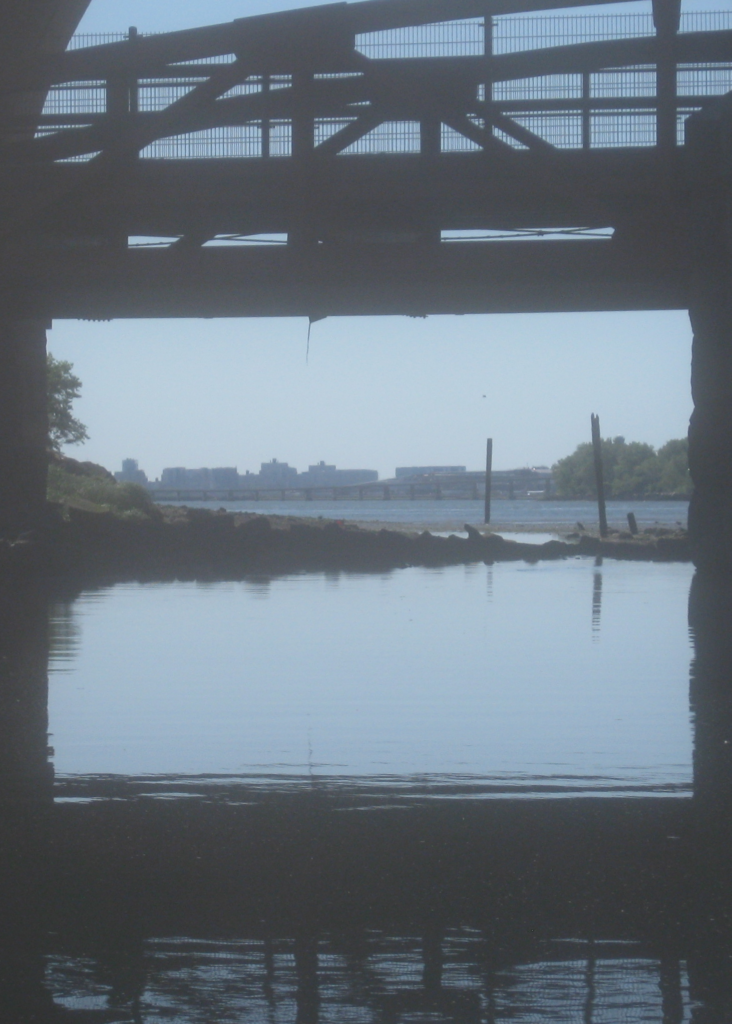
North Brother Island
North Brother, along with its smaller and less-famous sibling South Brother, marks the bend in the channel coming from Hell Gate where the East River proper is flowing alternately to and from the east; this is not yet, as is commonly believed, Long Island Sound. Like many uninhabited islands in New York City, it is forbidden to visit except by special arrangement, and is a designated bird sanctuary.
North Brother’s human history goes back to the late nineteenth century, when it was home to a quarantine hospital that replaced the one on what is now Roosevelt Island as the city’s home for quarantine. Notably, “Typhoid” Mary Mallon was locked up here not once but twice, the second time after violating a condition of release by returning to work as a cook and cleaning woman. Mary lived out her days on the island, succumbing to pneumonia in 1938.
The island continued being used as a hospital until 1963, its last mission being for recovering heroin addicts. Since then, it has fallen into disuse and subsequent disrepair. The ruins of the hospital are still visible, from the old ferry dock to the main building itself.
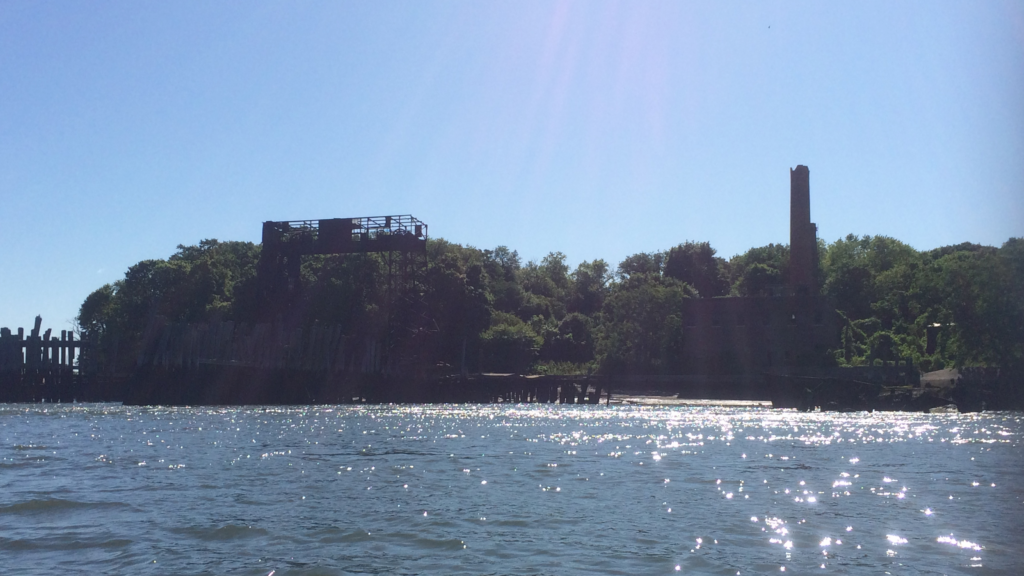
More than its long history as a lonely home for the diseased and drug-addicted, North Brother’s role in the disaster of the General Slocum makes it especially tragic. In 1905, a steamship filled with families heading out for a picnic caught fire as the shipped passed through Hell Gate. Many of the passengers could not swim, and in an era of poor regulation, personal flotation was poorly maintained and inadequate to the task.
Over a thousand people died, and the burning hulk of the Slocum ran aground on North Brother, whereupon staff and patients alike helped rescue the few survivors. Most of the passengers were from the German-American community in the Lower East Side, and the event so devastated that community that many of them moved away.
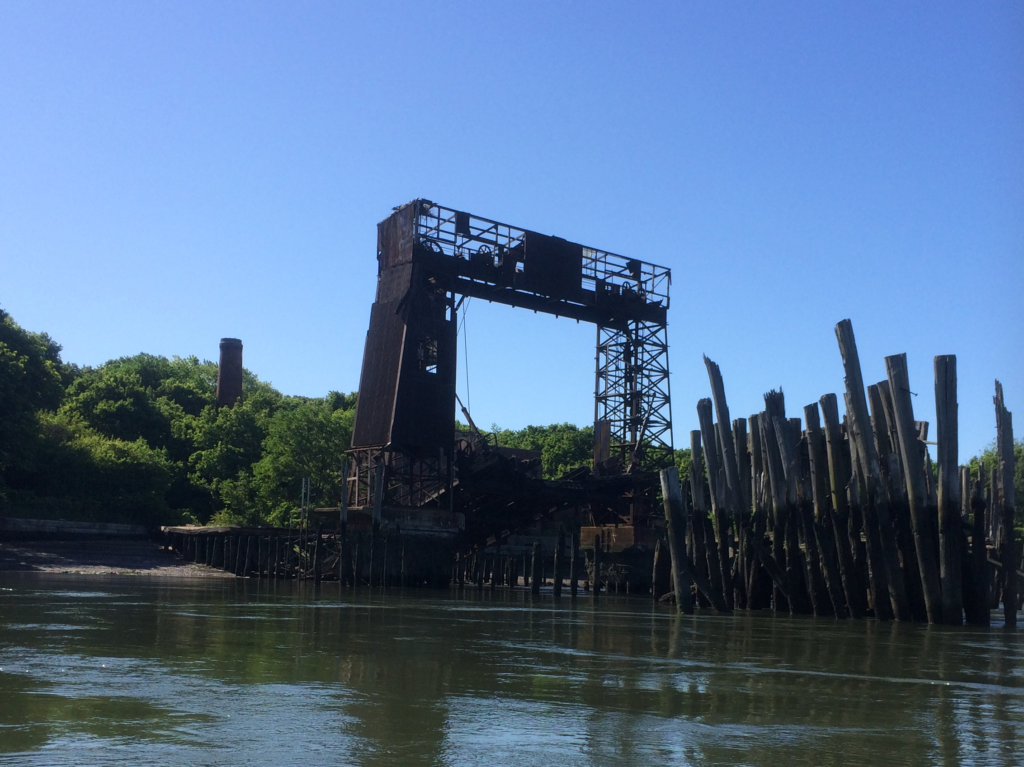
Shortly after passing North Brother, I continued through the channel between Hunts Point and Rikers Island. A DEP ship was tied up at the Hunt’s Point wastewater facility. Hardly any other traffic loomed. The Whitestone and Throgs Neck bridges were far ahead in the distance.
Rikers Island and Vernon C. Bain
Rikers Island is a large island in the upper East River, near La Guardia airport. A narrow causeway connects it to Queens. It is the site of multiple jail units. If there are any good stories about Rikers, they are greatly outweighed by multiple bad stories, and not too long ago, the Mayor and the city council announced a long-term plan to close Rikers in favor of smaller jails in the boroughs, along with less incarceration. Not surprisingly, the plan is controversial.
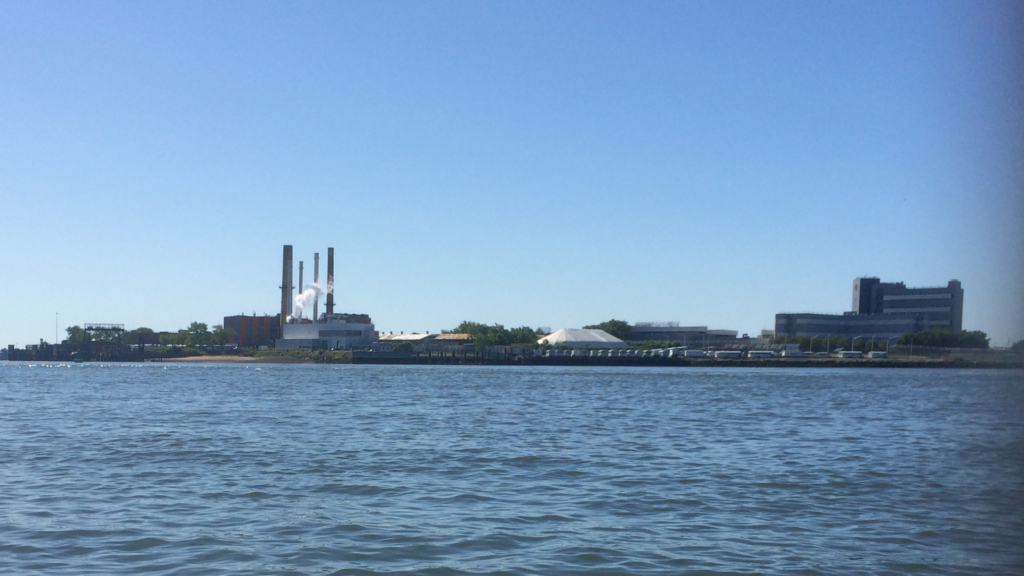
Less well known is the Vernon C. Bain, the prison barge tied up directly across the river from Rikers, in the Bronx. Named for a warden, the Bain is the largest operating prison barge in the world, and is used for juvenile detention and processing of inmates before they are transferred elsewhere. Closing the Bain is part of the plans to close Rikers.
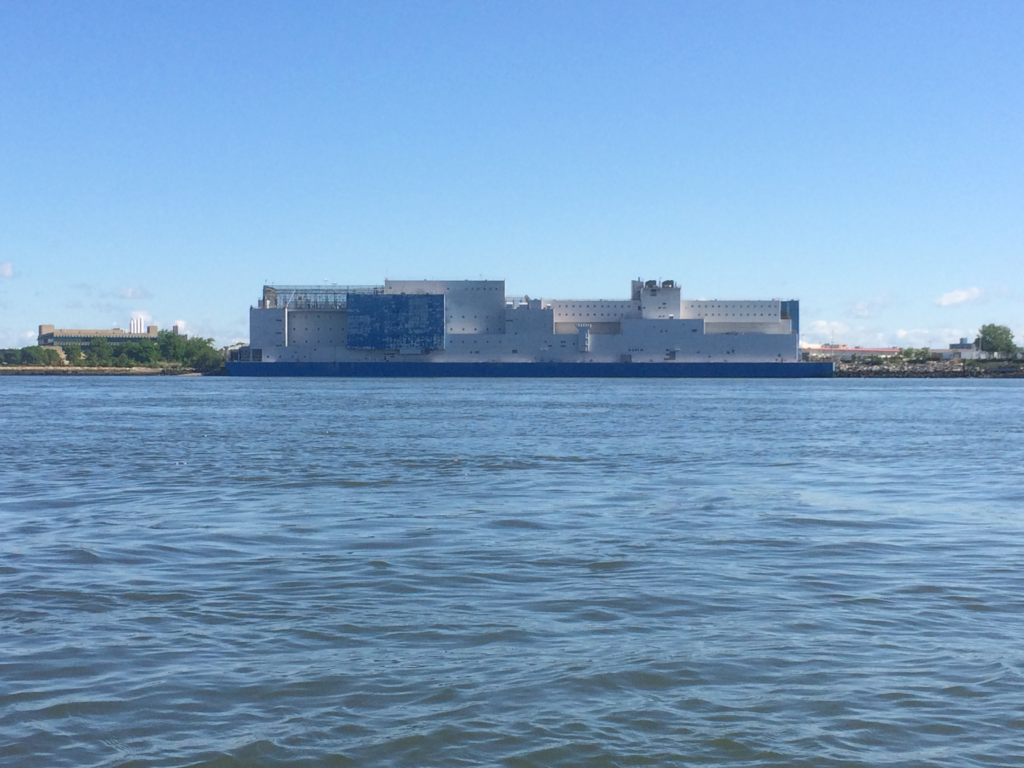
One recent story about Rikers, emblematic of the need for a variety of criminal justice reforms, is the detention of Kalief Browder. A teenager arrested for allegedly stealing a backpack, he spent three years in Rikers, most of that time in solitary confinement, with no trial and without being found guilty of any crime. Upon release, he had difficulty re-adjusting to life outside, and eventually took his own life.
The COVID-19 pandemic has prompted concerns about crowding in jails, not just at Rikers but across the country. Some inmates have been able to get transferred, but not all.
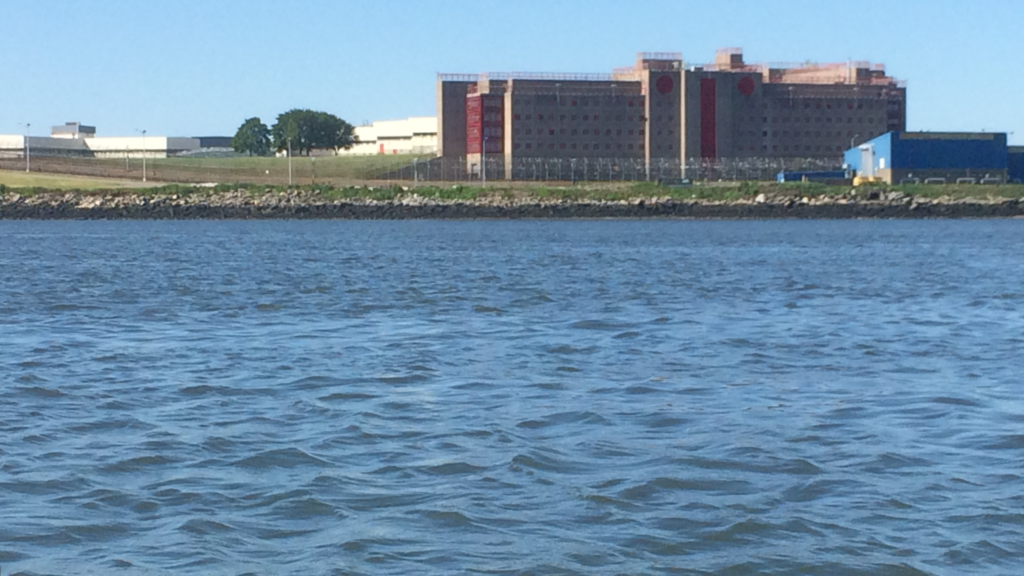
Passing Rikers, I kept in the channel and passed the ILS (Instrument Landing System) pier for LaGuardia. The tall waterfront homes of College Point gave way to the Whitestone Bridge, and shortly after, I turned to cross north, a bit quartered by the wind, letting the current carry me farther east, until I approached the SUNY Maritime campus.
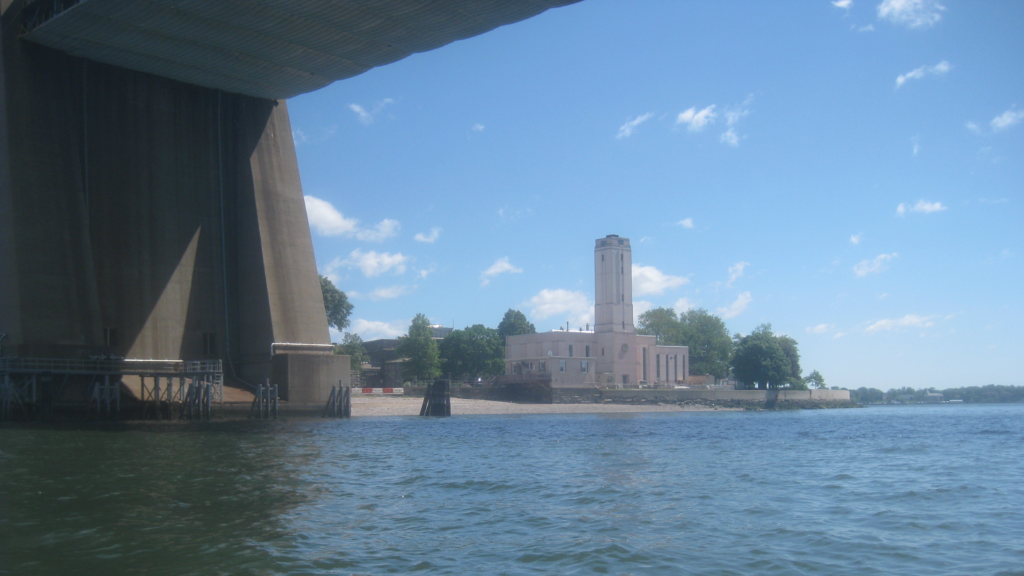
From here, the channel bends sharply left, nearly north, before passing Hart and City islands; the gap between the north shore of Long Island and the mainland widens into Long Island Sound proper. Unlike my journey so far, the water would be much more open, with no handrails for navigation. I would have to use landmarks, buoys, and other fixed markers to know where I was.
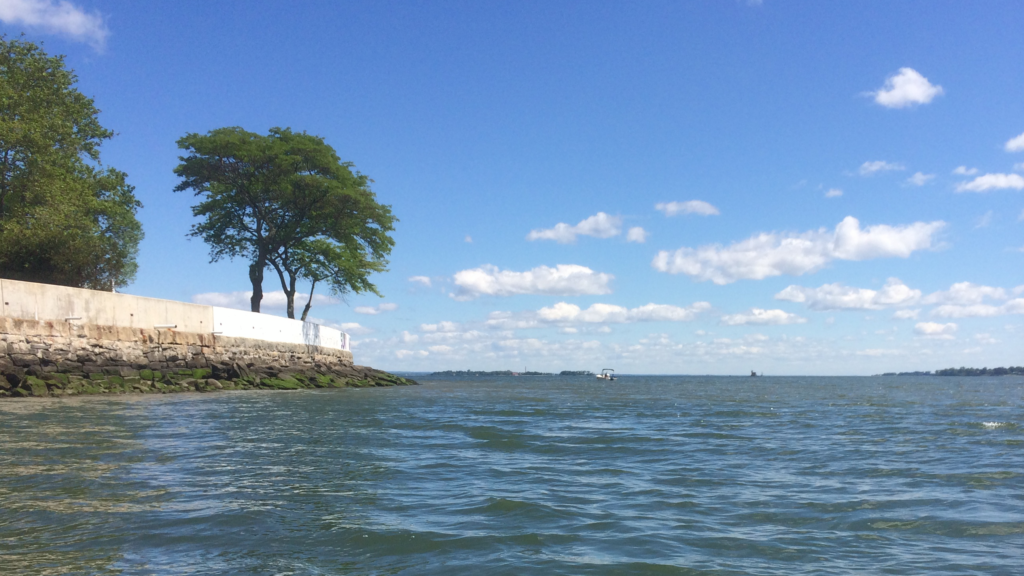
I set out for Hart. In a straight line, this would have been an open crossing of three miles; another option would have been to aim for the southern tip of City Island, which was a bit closer, and then cross over to Hart. I opted for the direct approach, figuring I still had enough current to help carry me.
What I didn’t account for was the strength of sustained wind gusts. Several long gusts set me back considerably, not so much be being directly against me, but blowing hard enough that I had to ferry against them to avoid being blown out into the channel.
The wind is no more sentient, nor deliberate, than a virus. It is a force of nature; there’s no consciousness to even consider human beings, one way or another. Over an hour later, having used up all the time I’d banked being ahead of schedule and then some, I sheltered in the lee of Hart Island and rested.
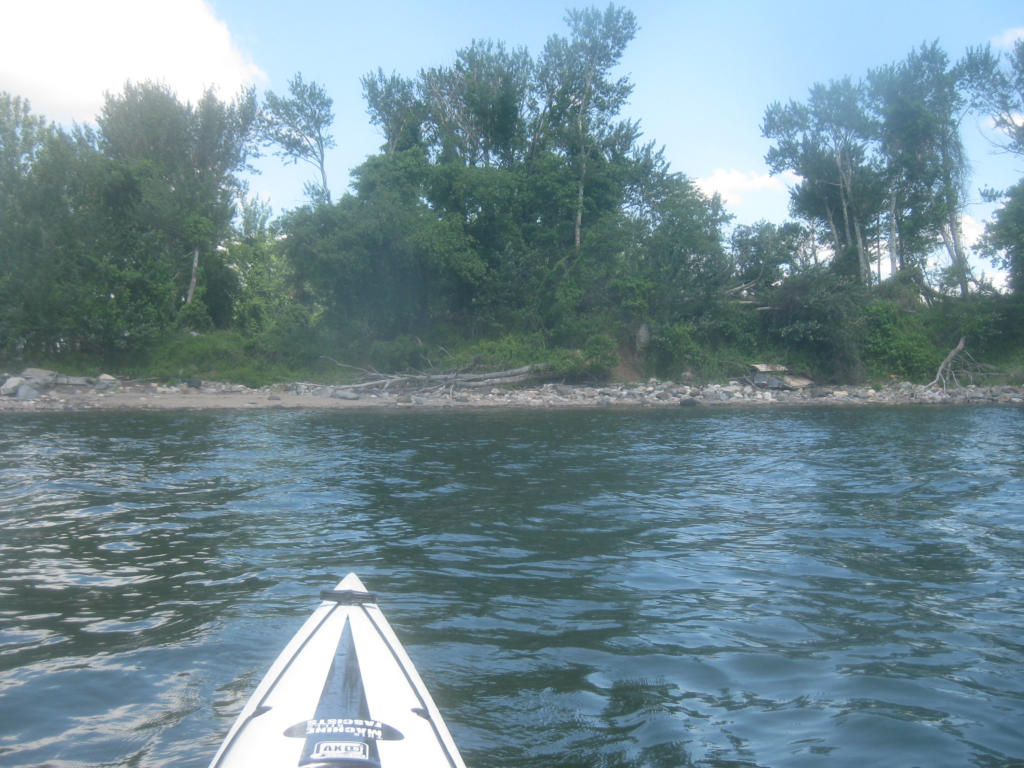
Hart Island
Hart Island is the city’s potter’s field; it’s where the unclaimed and indigent are buried; it’s also where victims of epidemic diseases, are buried. More recently, with respect to COVID-19, supposedly Hart was being prepared for burials related to it, but apparently that’s only for the unclaimed COVID-19 dead, not all of them.
The dead are buried by inmates from Rikers Island. They are driven by bus to nearby City Island, and then take a short ferry over to Hart. No one is allowed to visit Hart Island without special permission; generally only if someone can prove they are family to one of the dead. During the pandemic, the city hired private contractors for the work because there was insufficient labor to be found in jail.
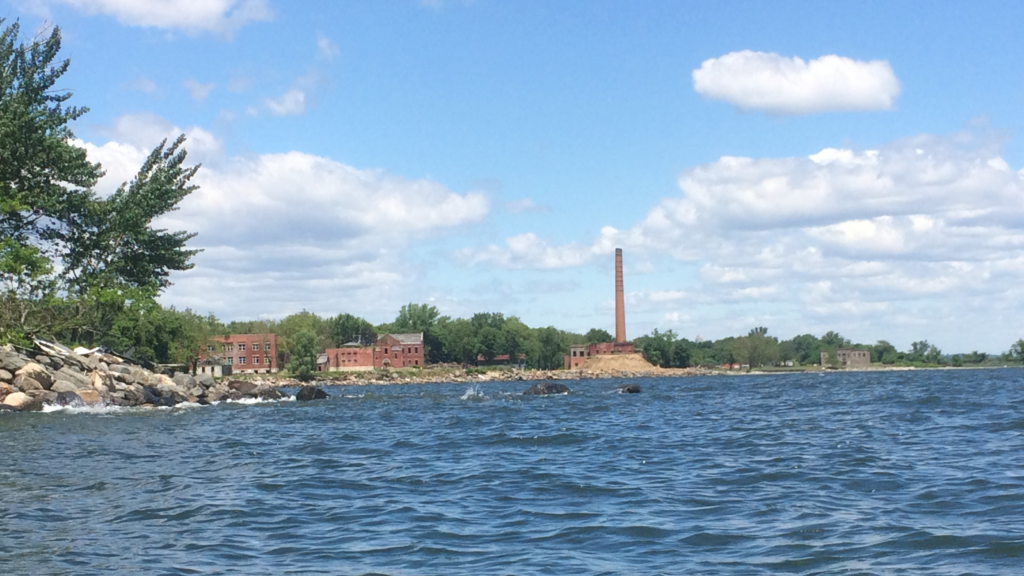
More recently, a few years ago a powerful storm washed away enough soil that human remains entered the water, prompting an administrative tug-of-war between NYC Parks and the Department of Corrections, basically amounting to Parks asserting they knew a lot more about landscaping and waterfront resilience than the DOC.
There has also been a slowly rising movement to turn at least part of Hart Island into a public park, with precedence in the past for converting graveyards into public parks. Even if that were to be planned, however, I wouldn’t expect anything too soon; a lot of work is likely to be required before it can be safely enjoyed.
One of my favorite writers is buried on Hart Island: Dawn Powell. Her breezy yet insightful style cuts right into the world of mid-20th century media and advertising, the world just before Mad Men but which endures, in many ways, today. Her short stories are an easy entry point into her world; her novels, delightful elaborations to read. She died of cancer and donated her body to Cornell for research; when they were done, years later, the executor of her estate would not claim her remains, hence she was interred on Hart Island.
The Hart Island project has a pretty good database of plots dating back to 1980. You won’t find Dawn Powell’s plot but many others can be looked up. Many of the deceased were babies, stillborn to poor parents, or died shortly after birth; their lifetimes are measured in minutes or hours. It’s heartbreaking. There are also many victims of AIDS buried there, from a time when even medical professionals were afraid to touch their bodies, living or dead. The first baby to die of AIDS in New York City is buried there, in a specially marked plot.
I began my return journey, and decided to go near another landmark islet, not on my original itinerary of “three sad islands”. Stepping Stones Light is a boarded-up lighthouse marking the eastern edge of the approach to the city, not quite halfway between the US Merchant Marine academy and City Island.
Supposedly Stepping Stones is so named for an old Native American story, wherein they chased the devil (or whatever the equivalent of the devil was in their culture) to City Island. Trapped, the devil tossed giant boulders into the water, forming the Stepping Stones, and was able to use those to escape into Long Island.
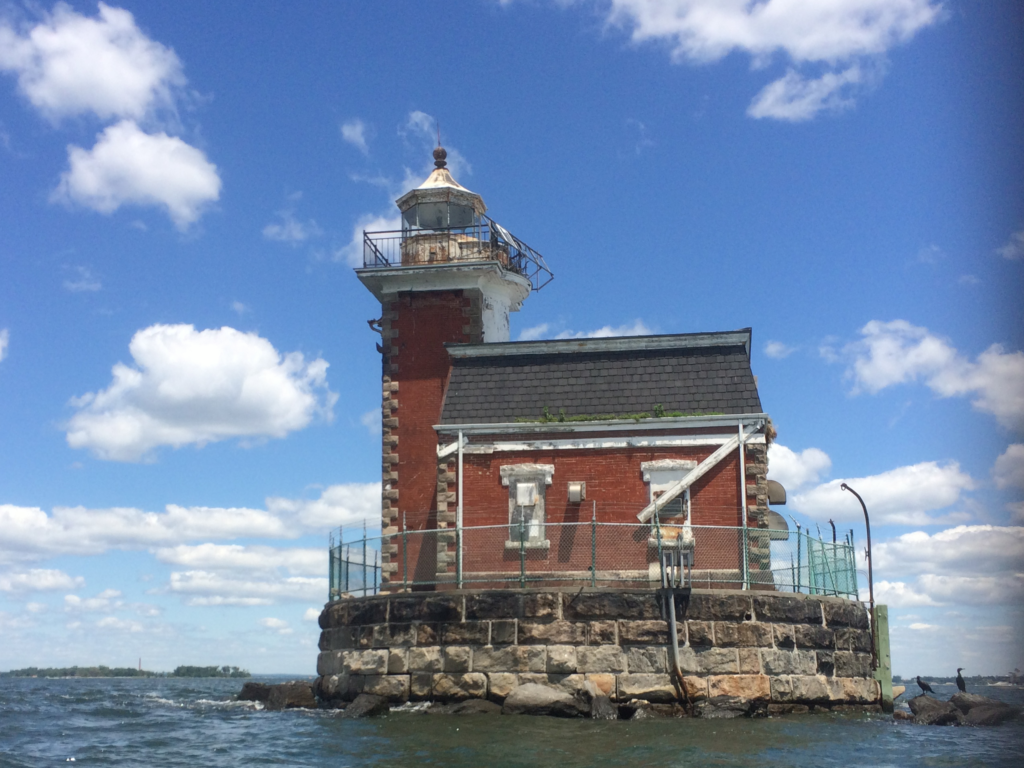
Make of that what you will. I like to think, first, huzzah to any culture that promotes fighting off the devil, whether the devil is an inescapable plague, or a darkness insinuated in our hearts; or maybe just a giant red man-goat with a pitchfork. Whatever. Second, more importantly, that we can erect a light on stones once thrown by said devil; that a beacon can be erected where the devil once trod.
We, human beings, are not forces of nature. We do have consciousness, and we are capable of being aware of others and how we affect them. Names are the labels for our shared humanity; we can remember their names: the sick, the criminal, their victims, the departed, just as we can choose whether and how to punish or reward them.
I considered this on the long way back, from the island of the dead, past the island of the punished and the island of quarantine. Sometimes we need to reform the rules, so that a thousand people don’t burn or drown because of rotten life preservers. But always, we must remember the names, no matter which island they ended their journey on.
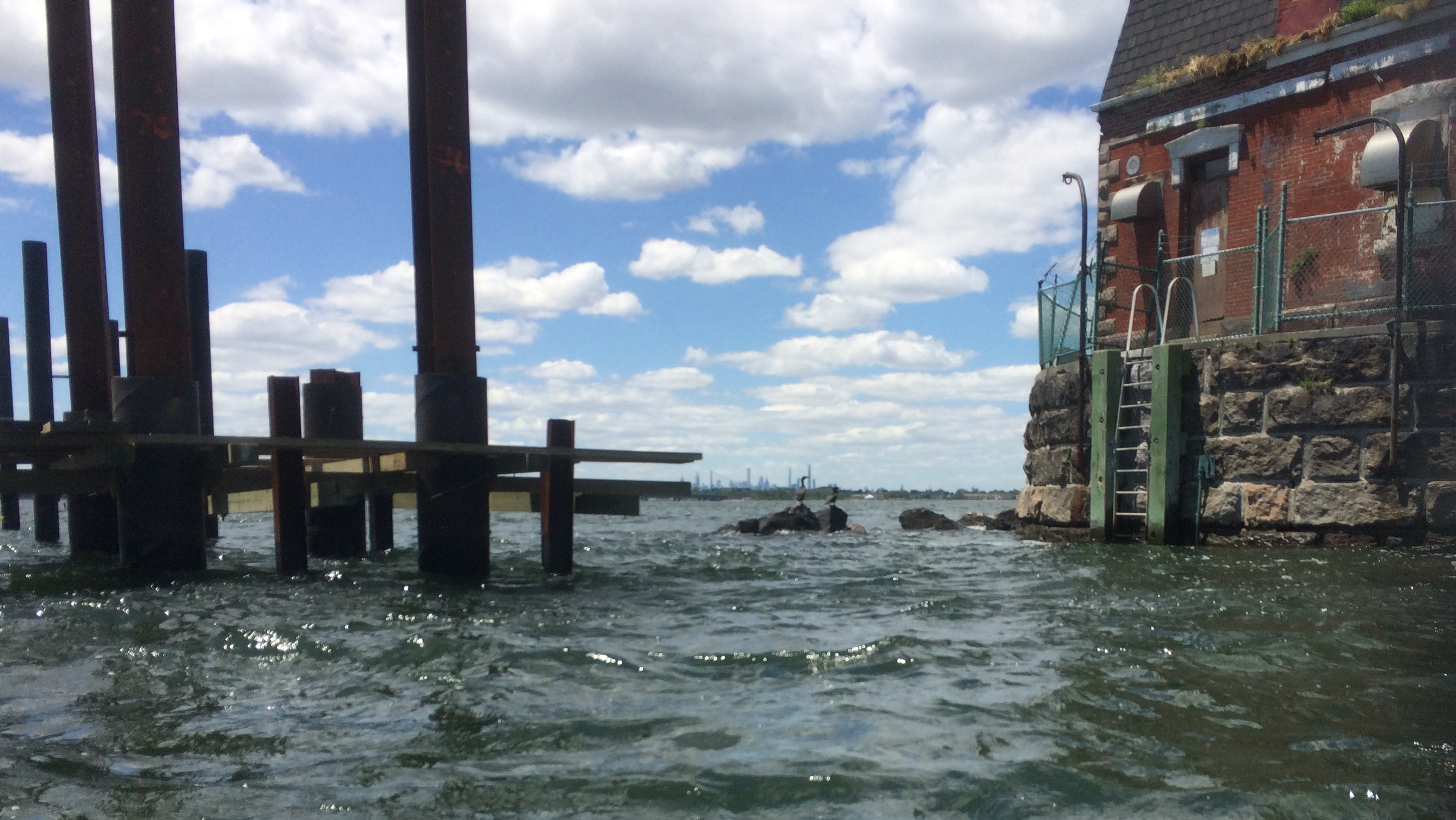
You are a great storyteller!
Islands in the Stream
That is what we are!